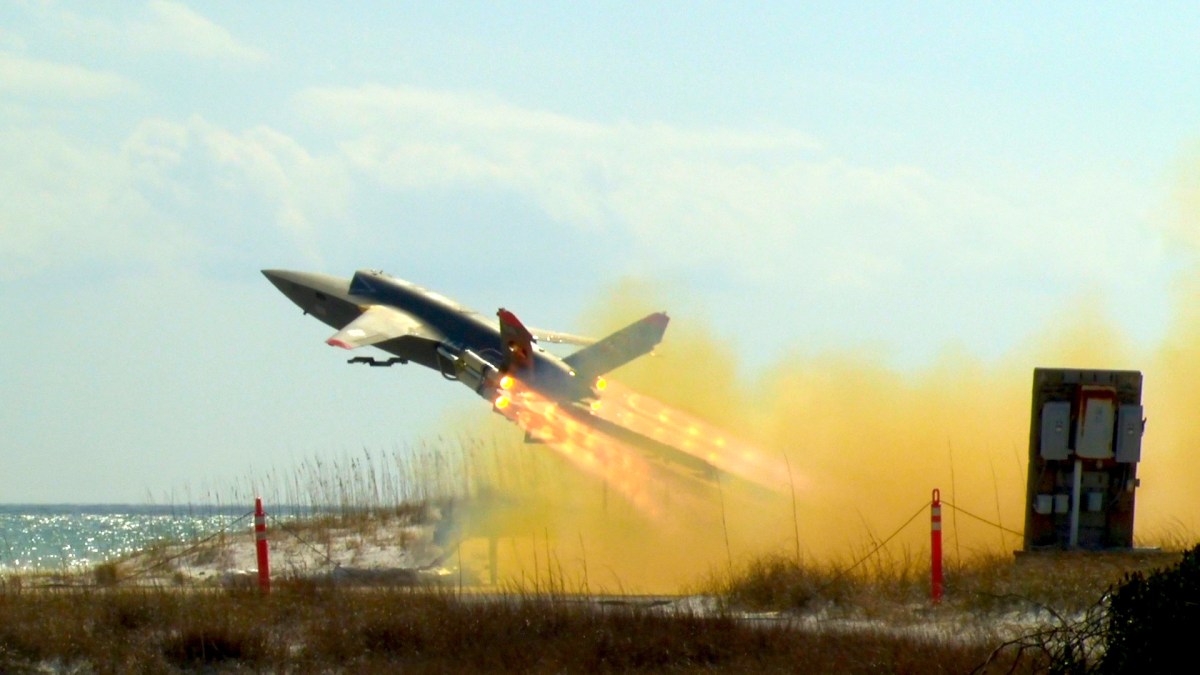Marines release new AI strategy

The Marine Corps issued a new artificial intelligence strategy that is expected to guide the service’s efforts to integrate the technology across its enterprise, from the back office to the battlefield.
Lt. Gen. Matthew Glavy, deputy commandant for information, described the release of the document, which was announced publicly Wednesday, as a major milestone in the Marines’ pursuit of digital modernization.
“Our fight for and with information needs AI now,” he wrote in the foreword for the strategy, noting that the war in Ukraine is demonstrating how the tech can enable faster decision-making.
“This strategy sets the conditions for delivering modern AI capabilities to support decision advantage in expeditionary advanced base operations and littoral operations in contested environments,” Glavy added.
Leaders of the Corps see opportunities for AI applications across warfighting functions as well as business operations.
However, the service faces AI-related challenges, including misalignment of the technology with mission objectives, competency gaps, difficulty deploying capabilities at scale, governance frameworks that hinder innovation, and barriers to collaboration, according to the strategy.
“Addressing these challenges will require significant resources,” officials noted.
The document lays out five key goals for improving the Corps’ posture.
“The primary aim of this strategy is to gain a comprehensive understanding of mission-specific problems where AI offers a solution,” officials wrote. The Deputy Commandant for Information Service Data Office has been tasked with shepherding that effort.
The Marines intend to create a repository of “candidate Al use cases” and a mechanism to manage the use case process that will inform service-level decisions and activities.
Boosting service members’ know-how for building, supporting and sustaining artificial intelligence systems and related tech is another top aim, which it will support with “stop-gap” training and education “at all levels” of the force.
“Immediate action is required to address current skill and knowledge shortfalls, while the long-term solution of transforming the Marine Corps workforce is being planned and executed,” according to the strategy.
To improve AI talent management, officials will be looking to provide financial or other incentives to personnel with specialized high-demand skills and to pursue organizational shakeups to better match individuals’ abilities, skills and interests with the military’s warfighting needs.
The need to scale the deployment of artificial intelligence technologies, including through modernization of data management, is also top of mind.
To facilitate those efforts, one of the strategy’s goals is to establish “enterprise-to-edge infrastructure, develop and publish standards, and integrate security that enables reliable, fast, and effective Al solutions,” officials wrote, noting that adoption and reuse of existing joint, allied and partner capabilities “will be maximized before developing unique capabilities” for the Marine Corps.
Infrastructure requirements for enterprise- and tactical-level employment of these types of technologies are to be determined by a working group led by the Data Service Office.
Officials also want cybersecurity to be baked into artificial intelligence efforts.
“Cybersecurity is integral to the development, deployment, and maintenance of Al capabilities. The Marine Corps will adopt best-in-class Al capabilities and software coupled with cybersecurity to protect our advantage against potential threats,” according to the strategy.
Promoting “responsible AI” is a key pillar of the strategy’s focus on governance issues, which includes creating a framework for oversight and management of innovation and algorithms.
“This governance will be lean but effective to encourage innovation while providing and enforcing standards and compliance,” officials wrote.
The Corps’ pursuit of so-called responsible AI meshes with a broader effort across the entire Defense Department to make sure artificial intelligence capabilities are safe, reliable, and effective, and operate in accordance with ethical and legal standards.
The final goal outlined in the strategy is to better leverage opportunities for collaboration, including with other Defense Department components, international allies, industry and academia.
“This will accelerate Al innovation and adoption within the Marine Corps, ensure alignment with broader defense objectives, and enhance interoperability with key partners. These partnerships will improve collective capabilities and provide cumulative resource savings,” the document states.
A detailed implementation plan — which will be executed by new AI task groups set up across the Corps — will be forthcoming to help the service achieve the goals laid out in the new strategy.
The task groups will “support commanders in identifying their use cases, acting as the Al advisor, and serving as the key link between Headquarters Marine Corps, Fleet Marine Force, and supporting establishments,” according to the document.
“The approach presented in this strategy provides a logical framework that aligns to Joint and National initiatives and sets the Marine Corps on a path to maintain pace with the rapidly evolving Al landscape, outpacing our adversaries and enemies across the competition continuum. Leveraging the esprit de corps and innovative nature of our Marines and civilians will allow us to remain agile, focused, and ready to Fight Smart,” officials wrote.
Artificial intelligence is seen as a key enabler of the Pentagon’s Combined Joint All-Domain Command and Control (CJADC2) warfighting construct, which calls for better connecting sensors, platforms and data streams of the U.S. military and key allies under a more unified network. The Army, Navy, Air Force, Space Force and the Office of the Secretary of Defense are also pursuing AI strategies and tools to further these aims.
Marine Commandant Gen. Eric Smith has been talking about how he envisions artificial intelligence improving the operations of unmanned systems and data-sharing architectures.
“There’s a human in the loop, the human turns control over to the machine at some point. And so I think that is kind of where we’re going to have to go. Because human in the loop on all of our systems is important and it’s required really by law,” Smith said last week at a Brookings Institution event. “You’ve got a human in the loop, but it doesn’t say how far back the human has to be. And I do think automation is kind of the wave of the future. I mean, it’s already here. And machine-to-machine learning is key, which is why our MQ-9s [drones] are so important because they’re talking to each other, they’re learning. They’re bouncing off ground sensors. They’re picking up signals from destroyers, from frigates. And they’re sensing and making sense of what’s happening and they’re ubiquitously passing that data to the ground force, to the surface force.”



